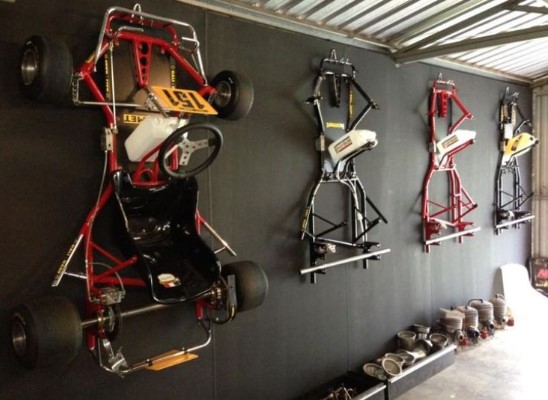Racing karts are precision machines designed to deliver speed, agility, and performance on the track. While engines and tyres often grab attention, the racing kart chassis is a crucial component that significantly affects handling, stability, and overall performance. Selecting the right chassis and maintaining it properly can be the difference between a competitive edge and inconsistent track results.
Understanding the Role of a Kart Chassis
The chassis is essentially the framework of a kart, supporting the driver, engine, wheels, and other essential components. Its design and construction influence weight distribution, rigidity, and flexibility—all of which directly impact how a kart responds during high-speed manoeuvres.
In the UK, racing enthusiasts and professional teams often source high-quality kart parts to ensure their chassis meets stringent performance standards. The right chassis allows the kart to handle corners smoothly, maintain stability at high speeds, and provide consistent feedback to the driver.
Key Factors Affecting Performance
1. Chassis Rigidity
Rigidity refers to how much the chassis flexes under stress. A stiffer chassis generally provides more predictable handling, particularly in high-speed sections of the track. However, too much rigidity can reduce grip on uneven surfaces. Finding the right balance between flexibility and stiffness is essential for optimal performance.
2. Weight Distribution
A racing kart’s chassis influences how weight is distributed between the front and rear axles. Proper weight distribution improves traction, cornering stability, and acceleration. Adjustments to the chassis setup, such as seat position and mounting points, allow drivers to fine-tune handling characteristics for different track conditions.
3. Cornering and Handling
The chassis determines how a kart responds to steering inputs. A well-designed chassis offers excellent feedback, allowing the driver to make precise adjustments during turns. Flexibility in the chassis can absorb minor track imperfections, improving tire contact and grip, which is critical for competitive racing.
4. Suspension Dynamics
Although karts do not have traditional suspension systems, the chassis itself acts as a flexible platform that absorbs vibrations and impacts. The torsional flexibility of the chassis influences ride comfort and tire performance. Understanding these dynamics helps drivers optimize handling for both smooth and bumpy tracks.
Choosing the Right Racing Kart Chassis
Selecting a chassis involves considering several factors:
- Driver Skill Level: Beginners may benefit from more forgiving chassis designs, while advanced drivers require precision-engineered models for competitive racing.
- Track Type: Different chassis designs perform better on tight, technical tracks versus fast, flowing circuits.
- Material and Construction: High-quality steel or composite materials provide strength, durability, and consistent performance.
- Compatibility with Kart Parts: Ensuring the chassis works seamlessly with other components, such as axles, brakes, and steering systems, is essential for optimal performance.
Working with reputable kart parts suppliers ensures access to chassis that meet racing standards and allow for proper customisation and adjustments.
Maintenance and Adjustment
A racing kart chassis requires regular inspection and maintenance to perform at its best. Key aspects include:
- Checking for Cracks or Damage: Even minor structural issues can compromise safety and handling.
- Aligning Axles and Steering: Proper alignment ensures smooth cornering and prevents uneven tire wear.
- Adjusting Seat and Weight Position: Fine-tuning driver position can enhance balance and responsiveness.
- Cleaning and Lubrication: Keeping the chassis and mounting points clean reduces wear and improves longevity.
Consistent maintenance ensures the chassis continues to deliver predictable performance lap after lap.
The Competitive Advantage
Investing in a high-quality racing kart chassis offers a significant competitive advantage. A well-tuned chassis enhances driver confidence, allowing them to push limits safely. Superior handling and stability reduce lap times and improve consistency across races. By pairing the right chassis with high-performance kart parts, drivers can achieve optimal performance tailored to their unique racing style and track conditions.
Conclusion
The racing kart chassis is far more than just a structural frame—it’s a key determinant of track performance, handling, and safety. From rigidity and weight distribution to cornering dynamics and maintenance, every aspect of the chassis affects how the kart responds on the track. Choosing a high-quality chassis, supported by reliable kart parts UK, allows drivers to fine-tune performance, enhance stability, and maximise their competitive edge. For anyone serious about kart racing, understanding and optimising the chassis is essential for achieving consistent lap times, improved handling, and overall success in the sport.





